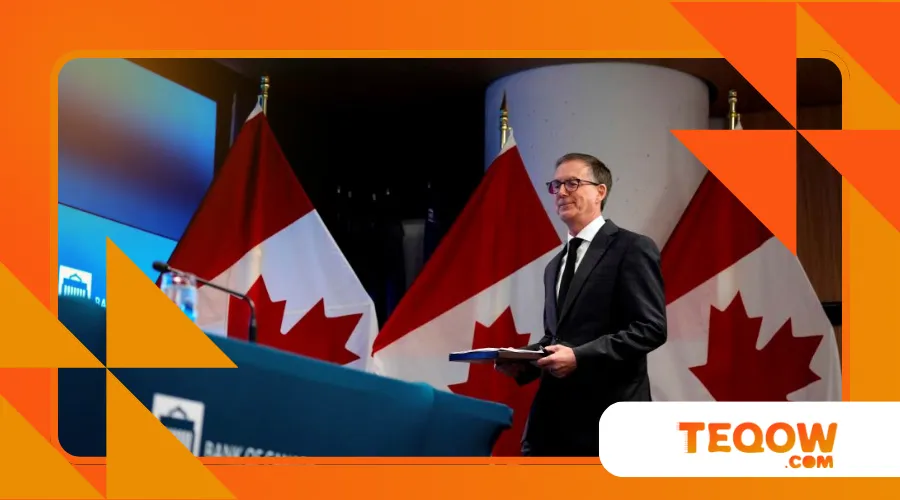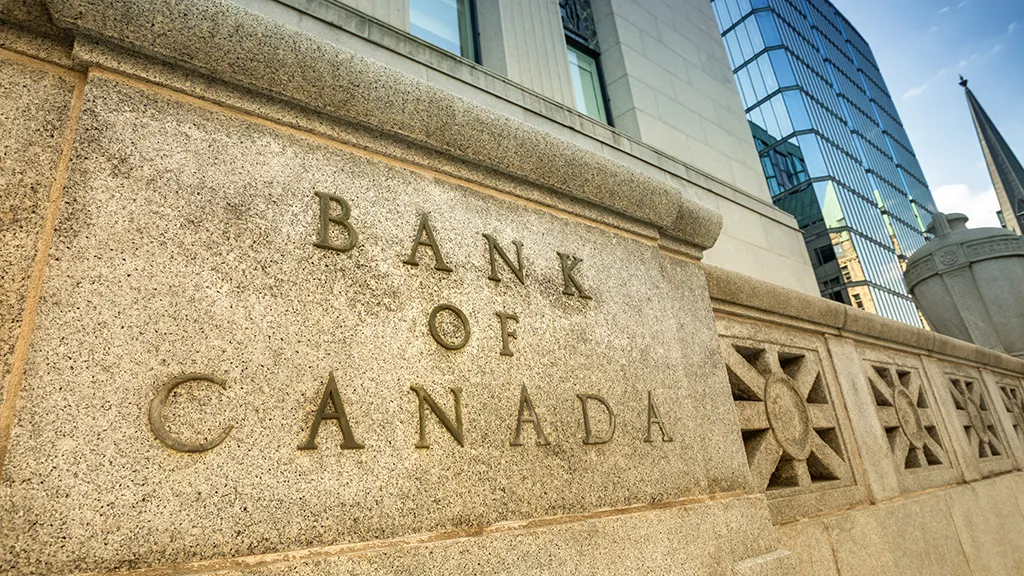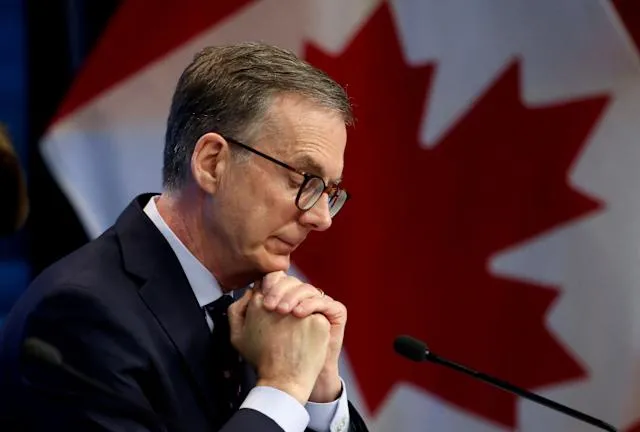Finances in Focus: Bank of Canada Holds Interest Rate Steady Amid Economic Uncertainty

The Bank of Canada holds interest rate at 2.75%, a decision announced on April 16, 2025, signaling a cautious pause after seven consecutive cuts.
This move, driven by global trade turbulence and U.S. tariff threats, reflects a central bank navigating uncharted economic waters.
For Canadians, this hold carries implications for mortgages, savings, and investment strategies, demanding a closer look at what lies ahead.
Why does this decision matter now, and how can households and businesses adapt to the uncertainty?
Recent economic analyses suggest that the impact of interest rate decisions can ripple through various sectors, influencing consumer behavior and investment patterns.
Understanding these dynamics is crucial for making informed financial choices in a volatile environment.
A Strategic Pause in a Stormy Economic Climate
The Bank of Canada’s choice to maintain its benchmark rate comes at a pivotal moment.
After slashing rates from 5% to 2.75% since June 2024, the central bank hit the brakes, citing unprecedented uncertainty sparked by U.S. trade policies under President Donald Trump.
Governor Tiff Macklem emphasized that monetary policy cannot resolve trade disputes but must prioritize price stability.
This pause isn’t a retreat—it’s a calculated stance, like a chess player holding position before a risky move.
The decision reflects a delicate balancing act.
Inflation, which cooled to 2.3% in March 2025, remains close to the Bank’s 2% target, but trade disruptions threaten to reignite price pressures.
Meanwhile, economic growth shows signs of slowing, with retail sales and employment softening.
The Bank’s governing council debated a quarter-point cut but opted to hold, wary of how tariffs could ripple through exports, consumer spending, and business investment.
As the Bank navigates these turbulent waters, it must also consider the long-term implications of its decisions on public confidence and economic stability.
Maintaining transparency in communication will be key to managing expectations.
+ Bank of Canada Interest Rate Policy in 2025: Impacts on Growth and Inflation
What the Hold Means for Canadian Households
For homeowners, the Bank of Canada holds interest rate decision brings a sigh of relief and a dose of caution.
Variable-rate mortgage holders, roughly 590,000 Canadians, avoid an immediate payment hike.
However, the pause signals no further relief for those renewing mortgages in 2025.
According to Royal LePage, 1.2 million mortgages are up for renewal this year, and borrowers face payments rising by about 8% on average, a lighter burden than the 14% projected in 2023, thanks to earlier rate cuts.
Consider Sarah, a Toronto nurse with a variable-rate mortgage.
When rates dropped last year, her monthly payments eased by $200, freeing up cash for her daughter’s education fund.
Now, with the Bank of Canada holds interest rate stance, she’s planning to lock in a fixed rate, fearing future hikes if trade wars escalate.
Her story mirrors thousands of Canadians recalibrating budgets in this uncertain climate.
To gain insights into how interest rate fluctuations affect personal finances, resources like Canada.ca provide valuable guidance on budgeting and financial planning.
These tools can help households navigate the complexities of changing economic conditions.
Businesses Brace for Impact
The corporate sector faces its own challenges.
The Bank of Canada holds interest rate policy offers stability for borrowing costs, but trade uncertainty looms large.
Canadian exporters, particularly in manufacturing-heavy Ontario, face potential U.S. tariffs that could dampen demand.
The Canadian dollar, already weakened to a five-month low against the U.S. dollar, reflects investor jitters, with markets pricing in a 50% chance of a rate cut in June 2025 after weak April jobs data showed unemployment rising to 6.9%.
Take MapleTech, a fictional small business in Windsor exporting auto parts to the U.S.
The owner, Raj, relies on stable borrowing costs to finance new equipment.
With the Bank of Canada holds interest rate decision, he can maintain his loan payments, but looming tariffs threaten his U.S. contracts.
Raj is now exploring markets in Europe to diversify, a move many businesses may consider as trade risks grow.
As companies adapt to this environment, many are investing in market research to identify new opportunities and mitigate risks associated with international trade.
This proactive approach can help businesses stay competitive amid uncertainty.

The Global Context: A Tightrope Walk
The Bank of Canada’s decision doesn’t exist in a vacuum.
Globally, central banks are grappling with similar dilemmas.
The Federal Reserve, holding rates at 4.25%–4.5%, cited Trump’s tariffs as a source of “heightened uncertainty.”
The European Central Bank, by contrast, cut rates for the seventh time since June 2024, prioritizing growth over inflation fears.
This divergence underscores the Bank of Canada’s cautious approach, walking a tightrope between stimulating growth and curbing potential inflation.
A 2025 International Monetary Fund stress-test scenario, included in the Bank’s Financial Stability Report, paints a grim picture: prolonged U.S. tariffs could push Canadian mortgage arrears above 0.5%, surpassing levels seen during the 2008–09 financial crisis.
This statistic highlights the stakes—households and businesses must prepare for a potential economic squeeze.
As central banks worldwide navigate these challenges, their decisions will continue to influence global markets and trade relations.
Understanding these interconnected dynamics is essential for anticipating future economic trends.
Table 1: Bank of Canada Interest Rate Trends (2024–2025)
| Date | Interest Rate | Change | Key Context |
|---|---|---|---|
| June 2024 | 5.00% | – | Start of rate-cutting cycle |
| October 2024 | 3.75% | -0.50% | Response to cooling inflation |
| January 2025 | 3.00% | -0.25% | Continued easing amid stable growth |
| April 2025 | 2.75% | No change | Bank of Canada holds interest rate amid tariffs |
Savings and Investments: Opportunities Amid Caution
For savers, the Bank of Canada holds interest rate decision means guaranteed investment certificates (GICs) remain attractive.
GIC rates, tied to the Bank’s benchmark, have cooled slightly but still offer competitive returns.
For instance, a five-year GIC at 3.5% provides a safe haven compared to volatile stock markets rattled by trade tensions.
Savers can use a GIC laddering strategy, spreading investments across multiple terms to balance liquidity and returns.
Investors, however, face a tougher road.
The Toronto Stock Exchange, sensitive to trade disruptions, has seen increased volatility.
CIBC’s chief economist, Avery Shenfeld, noted that the Bank’s hold reflects uncertainty rather than the end of easing, suggesting markets may see relief if tariffs ease.
For now, diversification into global markets or defensive sectors like utilities could mitigate risks.
In this climate, it’s essential for investors to stay informed about market trends and economic indicators that can impact their portfolios.
Regularly reviewing investment strategies can help in making timely adjustments.

Table 2: Economic Indicators Impacting the Rate Decision (March–April 2025)
| Indicator | Value | Change from Previous | Implication |
|---|---|---|---|
| CPI Inflation (March) | 2.3% | -0.4% | Stable, near 2% target |
| Unemployment (April) | 6.9% | +0.2% | Signals economic slowdown |
| CAD/USD Exchange Rate | 0.72 | -0.02 | Weakens due to trade uncertainty |
| Building Permits (March) | -4.1% | – | Declining business confidence |
Why the Pause? A Deeper Look
Why did the Bank of Canada holds interest rate when some economists expected a cut?
The answer lies in two scenarios outlined in its Monetary Policy Report.
In one, tariffs subside, allowing room for further cuts to spur growth.
In the other, prolonged trade wars stoke inflation, forcing the Bank to hold or even raise rates.
This dual-scenario approach, a departure from standard forecasts, underscores the complexity of today’s economic landscape.
Think of the Bank as a ship’s captain navigating foggy seas.
Cutting rates now risks overheating inflation if tariffs drive up costs, while holding steady buys time to assess the horizon.
This strategic pause allows the Bank to monitor export demand, consumer spending, and inflation expectations, ensuring it can act decisively when clarity emerges.
As policymakers evaluate the situation, ongoing communication with the public will be vital to maintain trust and confidence in monetary policy.
Transparency will help manage expectations as the economic landscape evolves.
+ Bank of Canada Warns US Trade War Threatens Economy
Engaging Canadians: What’s Your Plan?
What will you do if trade tensions escalate and borrowing costs rise?
For households, this is a moment to reassess budgets, prioritize debt repayment, or explore fixed-rate options.
Businesses must diversify markets and strengthen cash reserves.
The Bank of Canada holds interest rate decision isn’t just a policy update—it’s a call to action for Canadians to adapt to a shifting economic reality.
Encouraging financial literacy and proactive planning can empower Canadians to make informed decisions during uncertain times.
Workshops and online resources can provide valuable tools for navigating the complexities of personal finance.
Looking Ahead: A Path Through Uncertainty
The Bank of Canada’s decision to hold rates at 2.75% reflects a prudent response to global trade risks and domestic economic signals.
While inflation hovers near target and unemployment ticks up, the central bank is poised to act if conditions shift.
For now, households like Sarah’s and businesses like MapleTech must navigate this uncertainty with agility, balancing caution with opportunity.
As markets await the Bank’s next move—potentially a cut in June 2025 if jobs data weaken further—Canadians can take proactive steps.
Locking in mortgage rates, exploring GIC laddering, or diversifying investments can provide stability.
The Bank of Canada holds interest rate stance is a reminder that in turbulent times, preparation is power.
In conclusion, the evolving economic landscape necessitates adaptability and foresight.
By staying informed and proactive, Canadians can better navigate the challenges and seize opportunities that arise in uncertain times.
